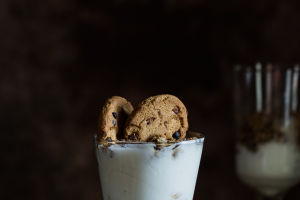The ox is a very familiar animal, known for its loyalty and hard work, much like the dog.
They are generally large in size but have a gentle and industrious nature.
In rural areas, it is common for people to keep one or two cows at home, primarily for plowing fields and contributing to agricultural development. However, have you ever wondered what the world's smallest cow looks like?
The world's smallest cow hails from India and is called Mannichayman. While cows are typically large, this particular cow stood at just over 60 cm tall at the age of six. Due to its diminutive size, it was certified by the Guinness Book of Records as the smallest cow in the world. Prior to that, the record for the smallest cow measured 69.07 cm.
Upon receiving the Guinness World Records certification, this cow became a local sensation. The locals adored this pet-like cow, and its owner kept it as a cherished companion. It gained immense popularity in the area, receiving love wherever it went, and the owner took great pride in possessing such a unique cow.
Initially, the owner didn't notice anything unusual about Mannichayman while feeding it. However, as time passed, the other calves grew, while Mannichayman's size remained relatively unchanged. Regardless of how much the owner fed the cow, it simply didn't grow. Perplexed, the owner suspected illness and called a veterinarian for a check-up. However, the vet couldn't find anything wrong, and the owner decided to keep the cow as a pet.
Upon further investigation, we discovered that Mannichayman is a Vechur cattle, which is the smallest breed of cattle in the world. It derives its name from a small village in India called Vechur.
On average, these cattle measure around 81 to 91 centimeters in height. Researchers speculate that the region's hot and humid climate may be a factor contributing to their smaller size. Additionally, Vechur cattle have a modest appetite but are well-nourished.
The Vechur cattle are also incredibly small and adorable, with brown or black hair. Their appearance resembles that of a miniature deer. Although they are still a rare species in India, they are relatively abundant and not endangered. However, it is crucial to take this situation seriously and ensure their protection, providing them with a conducive living environment.
While the ox is widely recognized as a large and hard-working animal, it's fascinating to explore the world of its smallest counterpart, Mannichayman. This miniature cow, certified by the Guinness Book of Records, has captured the hearts of locals in India. As a Vechur cattle, it represents a rare breed that should be protected to maintain its unique presence in the animal kingdom.
Furthermore, the story of Mannichayman sheds light on the importance of biodiversity and the preservation of unique animal species. It serves as a reminder that every creature, regardless of its size, plays a significant role in maintaining the delicate balance of our ecosystems.
The Vechur cattle's small stature not only makes them appealing and adorable, but it also has practical implications. Their compact size allows them to navigate through narrow pathways and traverse uneven terrains with ease. This makes them particularly well-suited for farming in hilly regions and areas with limited space.
Moreover, the Vechur cattle's ability to thrive in the hot and humid climate of Vechur is a testament to their remarkable adaptability. They have developed unique characteristics and physiological traits that enable them to withstand such challenging conditions. By studying and understanding these adaptations, scientists and researchers can gain valuable insights into animal evolution and potentially apply them to other species.
However, despite their resilience and relatively abundant population, the Vechur cattle still face certain threats. Habitat loss due to urbanization and agricultural expansion poses a significant risk to their survival. Additionally, the introduction of larger and more commercially viable cattle breeds may lead to the displacement of the Vechur cattle, further endangering their existence.
To protect and preserve the Vechur cattle, it is crucial to raise awareness about their importance and promote conservation efforts. This can be achieved through educational programs, community involvement, and government initiatives. Local communities should be encouraged to embrace and celebrate their unique cattle breed, fostering a sense of pride and responsibility for their preservation.
The world's smallest cow, Mannichayman, serves as a captivating example of the wonders of nature. Its story highlights the importance of protecting and preserving rare and unique animal species like the Vechur cattle. By valuing biodiversity and embracing conservation efforts, we can ensure the survival of these remarkable creatures and maintain the delicate harmony of our ecosystems for generations to come.


